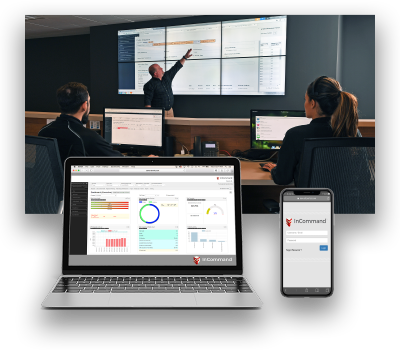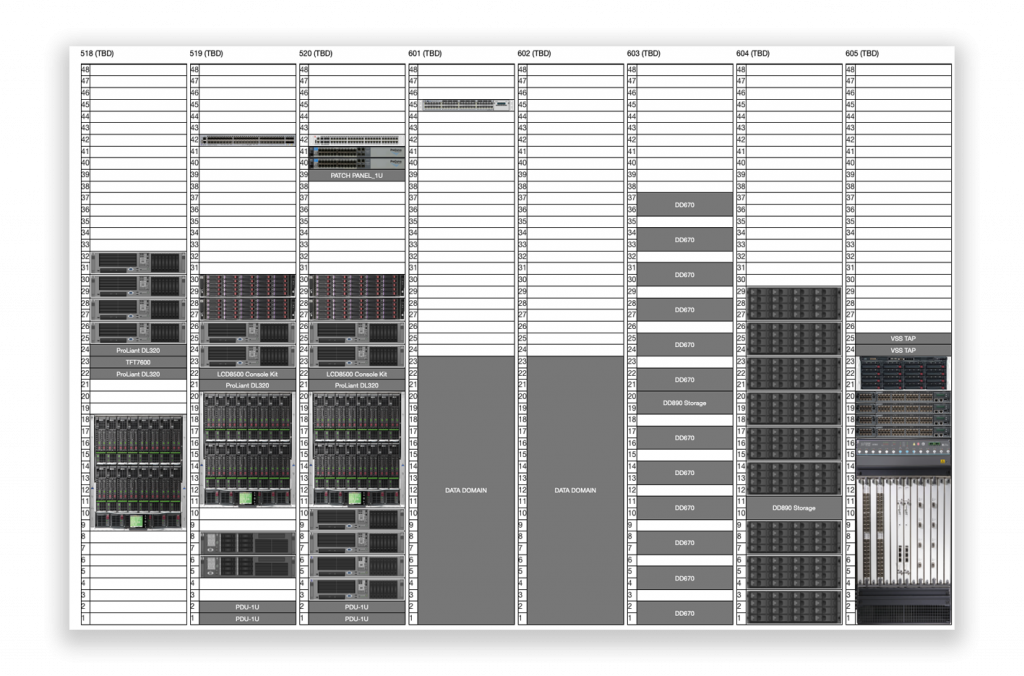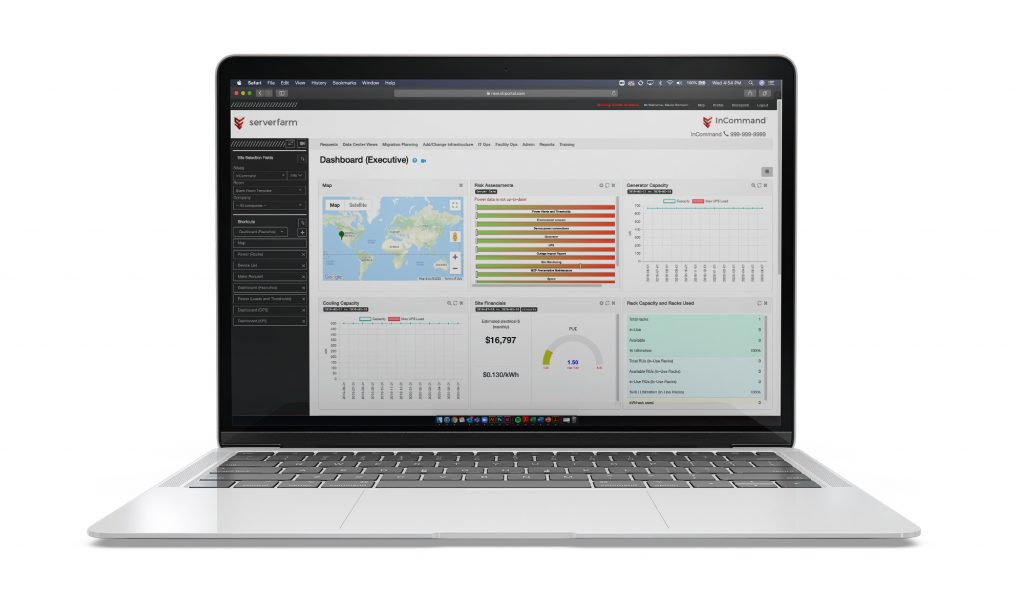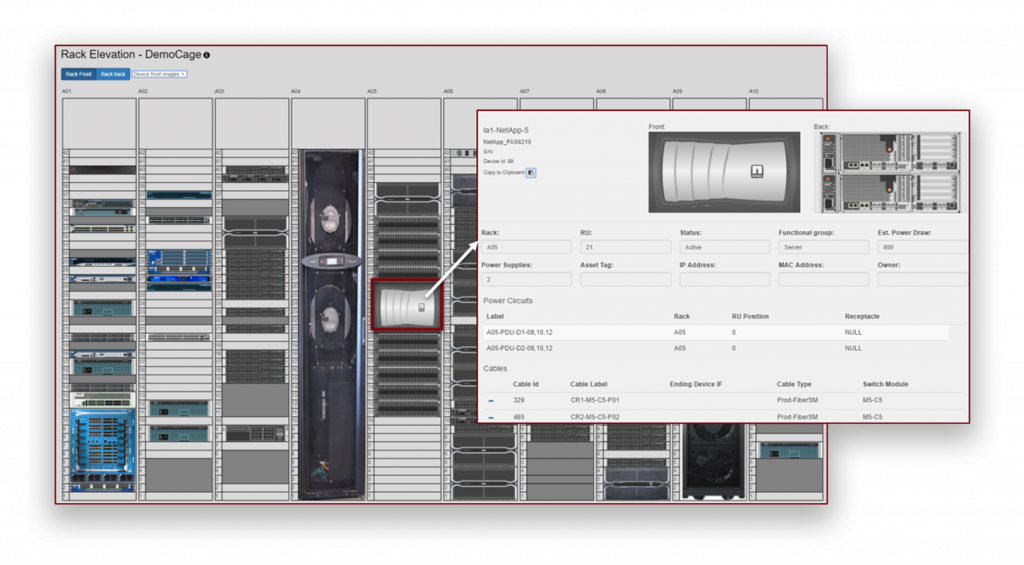
Have you read Part 1 yet? Click below to learn more about the business situation and what led the auto manufacturer to need a solution that could fix their legacy issues. Read Part 1 here.
Part 2: Success
To make data center planning more accurate, the client wants to know how many physical assets are in a rack and, by extension, how many in a row are occupied. What kind of draw is this making on the power system? What average temperature they are operating at?
InCommand provides tracking of every rack and how it is used. The platform achieves complete insight by tying into the mechanical electrical systems to get real-time metrics. It provides visibility into every rack, tracking how it is being used by monitoring power, cooling and space management.
What rack has adequate power, cooling and space to maintain the design efficiency of the data center?
“The company needed a solution that would fix the legacy issues and lay a long-term DC and IT foundation for its digital transformation.”
The InCommand dashboard could look into a particular rack, in a particular hall in a data center and show in real time that of 24 cabinets, 21 of them are in use and using 87% of their racks. They are running at 17kW per rack, and with a total of 882 rack components, 115 are available.
This informs effective data center planning.
For example, the client may want to know where the best location is to deploy high performance servers at high density. Where poor insight was common, this meant taking a risk as a lack of data may have meant this decision would have involved a large slice of guesswork.
But because InCommand monitors physical asset use in real time and feeds information back into the operation center, the client can make a fact-based decision based on actual available space, power, cooling and redundancy inside the data center.
The customer has far greater insight and maximizes the utilization of its physical assets.
ME and the physical environment is where most data center management and monitoring ends. InCommand monitors and informs the management of the IT capacity.
Power and cooling is monitored through real-time metrics from the systems in the data center. It also informs the operator that power and cooling redundancy levels are where they need to be.
Predictive and controllable operations
Flying blind and praying is a sub-optimal approach to running a data center. With InCommand intelligence, the client found that instead of living with daily worries about downtime, strategic planning is now possible. The user has the key to mitigating potential risks of outages, overloads and oversubscriptions.
Because the client is no longer being constrained by relying on lagging indicators, this changes data center daily priorities. It shifts the operation from reactive to pro-active. InCommand enables proactive preventative maintenance as problems are spotted before they happen. Early problem solving also prevents recurring incidents.
“The customer has far greater insight and maximizes the utilization of its physical assets.”
In terms of uptime and security, it is important to note why a cloud-based platform is the right choice. Where an infrastructure management tool resides on the premise of the customer, this is absolutely useless when premises goes dark. Just when information is most needed, the operator suddenly loses access to the management tool. This does not happen with InCommand.
For unplanned outages, the normal reaction was reactive chaos, knowing little more than that the data center was in trouble. With InCommand, the client found the scale of the problem of any unplanned outage is quickly identified. Details of the particular rack, rack unit and host name of every device that goes down is readily available.
When multiple devices crash, the teams knows instantly which rack and rack unit went down, as well as the host name of every device. This saves hours of work and helps get systems back up quickly.
Benefits
The client now has a completely different approach to day-to-day data center operations. It can confidently make and execute strategic decisions. It can maximize the use of its assets while maintaining efficient operations. It knows where capacity is available and where it is constrained. Its security posture has completely changed for planned and unplanned downtime.
Using InCommand, the 55 data center sites are being managed from a cloud service and making physical data center and IT assets available to support the business with the same or better flexibility, agility, performance and availability as the best-run cloud services.
InCommand
End of Life and Asset Refresh Example
One of the client’s big problems was identifying all assets and where they sat. The client is using InCommand to inform it on a major server refresh project.
The physical audit of 124 rooms built a virtualized client global portfolio. Each day this provides new benefits. It saves hundreds of person hours every month.
In seconds the client can search for a particular server model using its serial number. The client can immediately identify the exact number of servers of a particular model and the racks where they are located. By virtually seeing where they are, the team saves many hours of manual searches. This is especially valuable where multiple refresh projects are ongoing.











